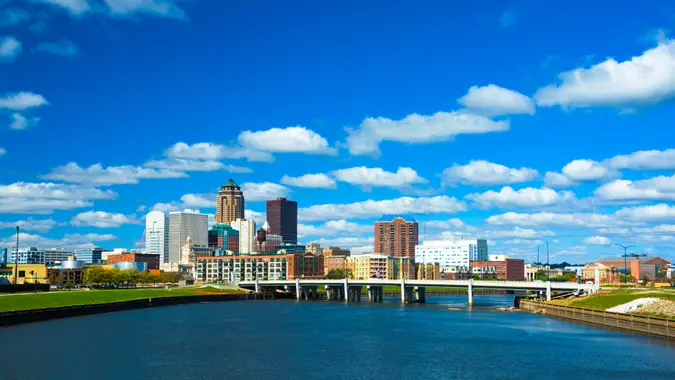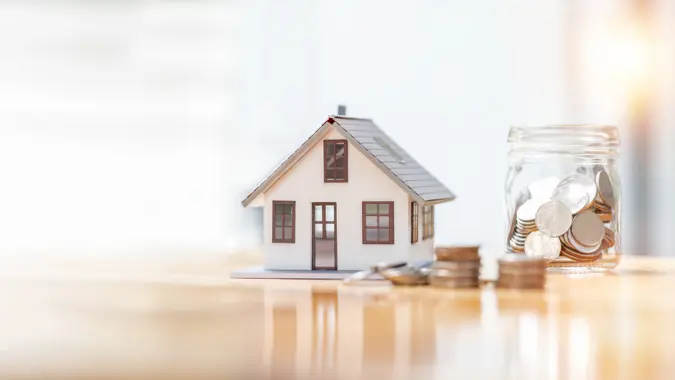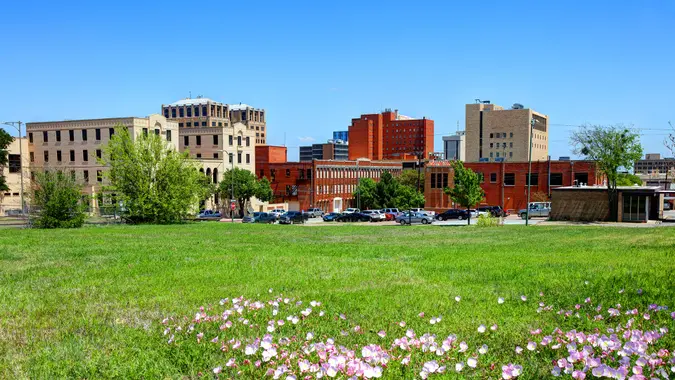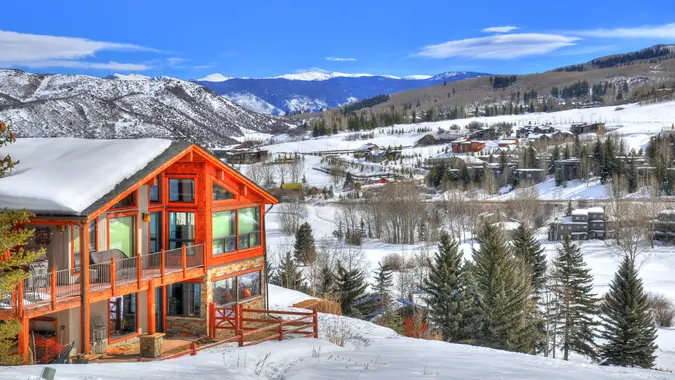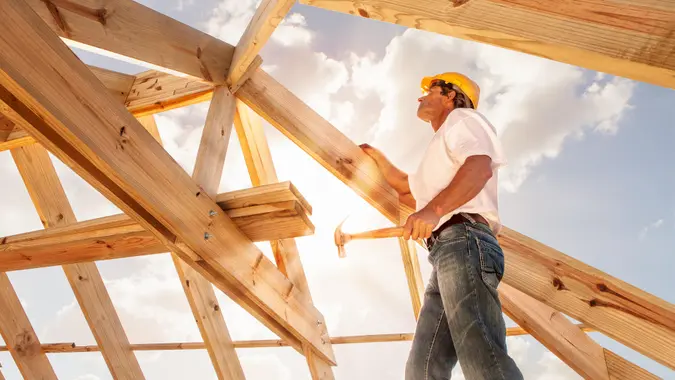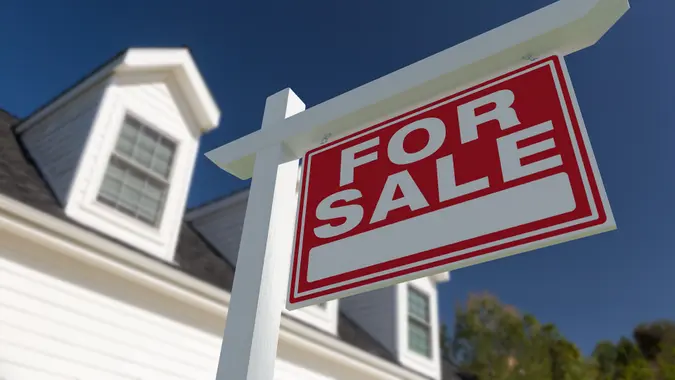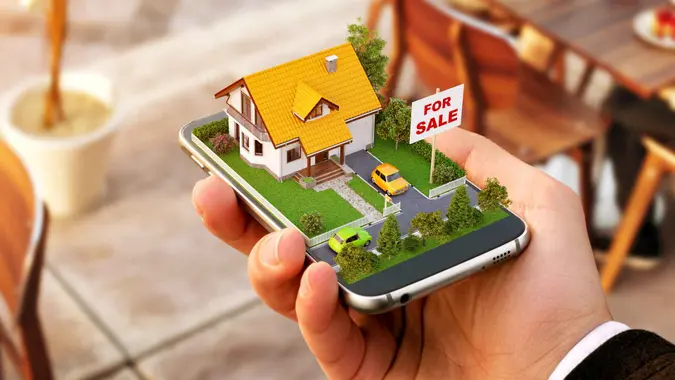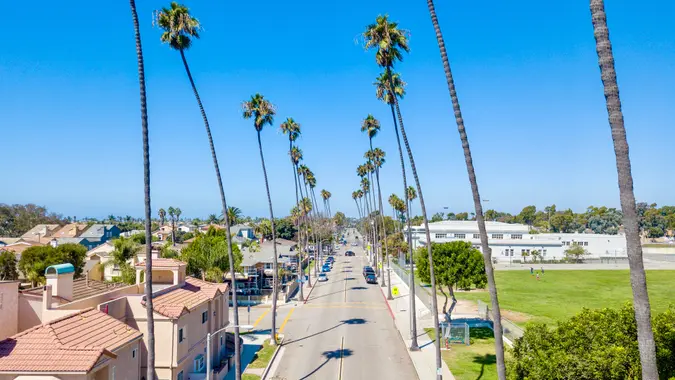5 Types of Homes You Should Avoid in 2025

Commitment to Our Readers
GOBankingRates' editorial team is committed to bringing you unbiased reviews and information. We use data-driven methodologies to evaluate financial products and services - our reviews and ratings are not influenced by advertisers. You can read more about our editorial guidelines and our products and services review methodology.

20 Years
Helping You Live Richer

Reviewed
by Experts

Trusted by
Millions of Readers
As the real estate market and mortgage rates constantly evolve, certain home types are more likely to decrease in value. This trend can be influenced by economic conditions, new political administrations, shifts in buyer preferences in regional housing markets and environmental policy changes.
Cost of living is still going up, and now with new impending tariffs, who knows where home prices will go when it comes to buying, selling, stocking or maintaining.
Understanding these dynamics is crucial for homeowners, investors and potential buyers alike. Real estate across the country has no shortage of options, but paying attention to current trends can help you make the best decision and avoid properties that may not keep their worth over time.
Here are five types of homes that are likely to see a decline in their market value.
Homes in Climate-Vulnerable Areas
Homes in regions prone to climate-related disasters, like coastal areas susceptible to hurricanes, flood zones and regions at high risk of wildfires, could significantly drop in value. For example, even popular locations or retirement destinations like Florida could take a hit in the housing market thanks to hurricane damage or other natural disasters.
The increasing frequency and severity of climate-related disasters have heightened both awareness and caution among buyers as well as hurt sales prices for sellers. Insurance costs in these areas are skyrocketing, and in some cases, insurance companies are withdrawing coverage altogether.
This makes homes in these regions less attractive to buyers, decreasing demand and, consequently, lowering property values.
Outdated Single-Family Homes
Single-family homes that have not been updated or renovated in decades don’t hold as much appeal to buyers. Today’s homebuyers are looking for modern amenities, energy-efficient systems and homes that require minimal renovation.
Properties that are outdated, with old heating systems, poor insulation, outdated kitchens, and bathrooms, or that lack smart home technology, are becoming increasingly difficult to sell at premium prices.
As buyer preferences continue to evolve towards modern, sustainable, and tech-friendly homes, the gap in value between updated and outdated homes is expected to widen.
Luxury Urban Condos
The post-pandemic era has shifted people’s preferences from dense urban living to more spacious suburban or rural homes. This trend may continue through 2025, affecting the value of luxury urban condos. High-end condos in city centers, which once commanded premium prices for their location and amenities, are facing decreased demand.
As remote work becomes more normalized, people prioritize space and comfort over proximity to urban job centers. The shift towards out-of-office work also alters traditional property demands in urban centers in general as the real estate market is highly responsive to these trends.
Additionally, the high maintenance fees associated with luxury condos are becoming a deterrent for buyers, decreasing these properties’ values.
Homes Near Polluting Industries
Properties located near polluting industries, like factories, refineries or heavily trafficked highways, are expected to decline in value. Increasing awareness and concern over environmental health and air quality influencing buyer preferences. Not only are these locations a health concern, but also largely concerning for your overall investment strategy.
Homes in these areas are often subject to poor air quality, noise pollution and other environmental hazards, making them less desirable. As the market shifts towards healthier living environments, these homes are expected to decrease in attractiveness and value.
Oversized Properties in Declining Neighborhoods
Just because you have the biggest house on the block doesn’t mean you’ve made the best investment. Oversized properties, particularly those in neighborhoods experiencing economic decline or with diminishing local amenities, are projected to decrease in value.
These homes often come with high maintenance costs and property taxes, which can be a significant burden without the corresponding lifestyle or community benefits.
As smaller homes and communities with strong local amenities and economies become more popular, the demand for large properties in declining areas wanes, leading to a drop in market value.
 Written by
Written by  Edited by
Edited by 



